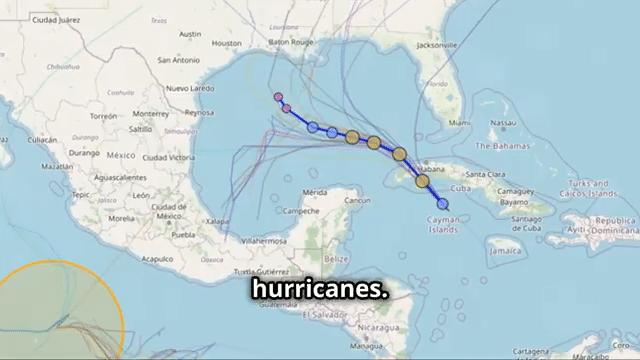Hurricane season often arrives with an unsettling sense of unpredictability. But one tool that’s constantly seen in storm tracking is the “spaghetti model.” At first glance, these colorful, squiggly lines may seem chaotic. However, within this tangled web is a surprisingly accurate system used by meteorologists to forecast the path of hurricanes. Though often seen as playful and confusing, spaghetti models offer life-saving information that helps people prepare for storms.
At their core, spaghetti models are visualizations of multiple computer models showing potential paths for a hurricane or tropical storm. These models, when placed together, resemble strands of spaghetti, each line representing a possible trajectory. While they might seem overwhelming, the insights they provide are essential in guiding decisions made by both officials and the general public.
Understanding the Complexity of Spaghetti Models
The data used to create these models is gathered from satellites, ocean buoys, and weather stations. Meteorologists feed this data into various weather models that simulate atmospheric conditions. Each model interprets the data differently, creating a range of predicted paths. Some models may forecast a storm making landfall in one area, while others might suggest an entirely different direction.
At first glance, this spread can be alarming. But Dr. Emily V. Sanders, a meteorologist at the National Hurricane Center, explains that this divergence reflects the inherent uncertainty of hurricane predictions. “The goal isn’t always pinpointing the exact path,” Dr. Sanders says. “Instead, we aim to understand the probability of various outcomes.”
When Do Spaghetti Models Matter Most?

The early stages of a storm’s development are when spaghetti models are most useful. When a tropical depression is first forming, its path is not well defined. Spaghetti models can offer early insight into where the storm might go, giving residents time to prepare.
Take, for example, Tropical Storm Debby. In 2021, the models showed a wide range of possible paths. While the National Hurricane Center initially predicted a landfall in Texas, the spaghetti models indicated a possibility of landfall anywhere between Texas and Florida. This spread of data gave people in both states time to brace for the storm.
As a storm strengthens, spaghetti models can still provide useful insights into potential shifts in the hurricane’s path. But once a storm reaches a certain level of intensity, the National Hurricane Center’s official predictions take precedence.
Spaghetti Models and the Public: Empowering Decision-Makers
For the public, spaghetti models are more than just lines on a map. They offer a chance to see how confident meteorologists are in their predictions. If all models converge on one path, it signals that the storm’s trajectory is relatively certain. On the other hand, if the lines are spread out, it indicates greater uncertainty, prompting local officials to prepare for a range of possible outcomes.
In fact, spaghetti models are often used by local governments to make decisions about evacuations, school closures, and emergency services. As meteorologists work with these models, the more aligned they are, the more confidence officials have in their actions. In contrast, if the models show different potential paths, authorities may take a more cautious approach, ensuring that people are prepared for any eventuality.
Spaghetti Models and the Future: Technological Advancements
As we look to the future, the technology behind spaghetti models is only getting better. With the integration of AI and machine learning, meteorologists are able to refine these predictions even further. AI can analyze vast amounts of historical storm data, offering even more precise predictions for future hurricanes.
The role of AI in enhancing spaghetti models is especially promising. By studying patterns in past hurricanes and comparing them with current conditions, AI can provide a clearer picture of where storms might go. This will not only improve the accuracy of predictions but also extend the lead time, allowing residents more time to prepare.
Furthermore, as climate change continues to impact the environment, we may see new models designed to track storm behavior in regions that were previously less vulnerable. In this evolving landscape, spaghetti models will continue to play a vital role in saving lives and reducing damage during hurricane season.
| Name | Role | Affiliation | Contributions | Website |
|---|---|---|---|---|
| Dr. Emily V. Sanders | Meteorologist | National Hurricane Center | Expert on storm tracking and hurricane forecasts | NOAA |
While no model can predict a storm’s exact path with certainty, spaghetti models offer vital insight into hurricane forecasting. Their ability to provide early warnings and inform preparations is indispensable. As technology improves, these models will become even more accurate, offering a brighter outlook for disaster preparedness and storm tracking.
